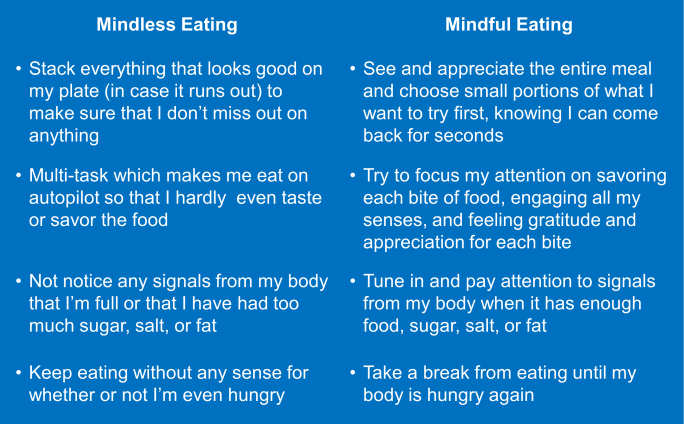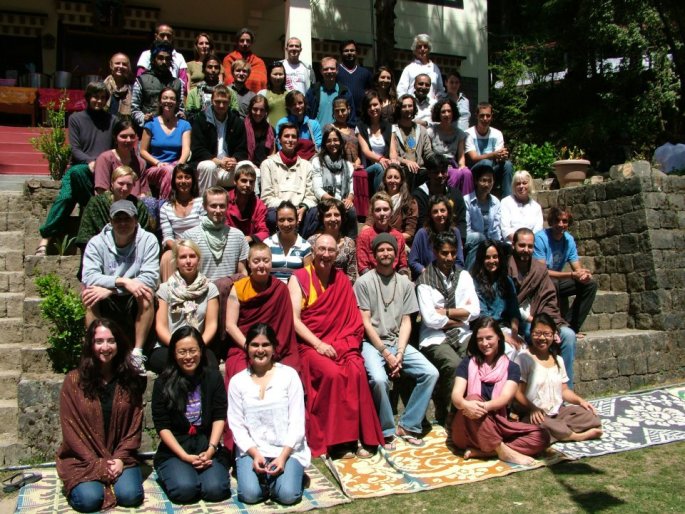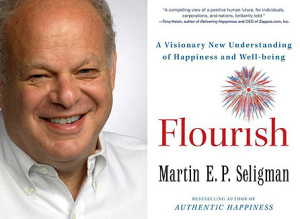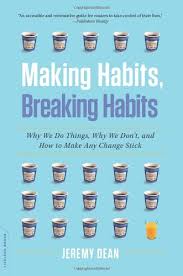Have you ever wondered why how you think, feel and act can change dramatically from day to day or even moment to moment?
 On some days, you are in your best form and can rise to any challenge with grace. On other days, the most minor irritation upsets you or you have no self-control no matter how hard you try to control your urges. The answer is literally in our brains. Findings from neuroscience reveal that our state of mind depends on what neural networks are firing in our brains, that our neural wiring can either help us or cause us to get in our own way, and that by changing our neural wiring, we can gradually gain mastery over our mind. This paper explains how our emotional states impact brain functioning and how proactively shifting our emotional state enables us to experience a higher level of awareness and consciousness in our daily lives and interactions.
On some days, you are in your best form and can rise to any challenge with grace. On other days, the most minor irritation upsets you or you have no self-control no matter how hard you try to control your urges. The answer is literally in our brains. Findings from neuroscience reveal that our state of mind depends on what neural networks are firing in our brains, that our neural wiring can either help us or cause us to get in our own way, and that by changing our neural wiring, we can gradually gain mastery over our mind. This paper explains how our emotional states impact brain functioning and how proactively shifting our emotional state enables us to experience a higher level of awareness and consciousness in our daily lives and interactions.
The three emotional states of the brain
The Calm Clarity Framework: Brain 1.0, 2.0, 3.0
Several years ago as a brain geek turned social entrepreneur, I created the Calm Clarity Program to help teenagers from economically disadvantaged communities understand how the brain works and direct the development of their brains to become more resilient to stress and trauma. To do this, I developed a simple, intuitive framework by connecting our emotional states to three distinct overarching patterns of brain activation, which I call Brain 1.0, Brain 2.0 and Brain 3.0, and showing how our brain functioning in each of these states affects the way we think, feel, behave, and interact with people.[1]
This framework for the three emotional states of the brain was partly based on the triune brain model developed by a neuroscientist named Paul MacLean in the 1950s.[2] His theory proposed that the human brain evolved over time in three main layers, such that the structures in each layer enabled new adaptive functions and behaviors. The Calm Clarity framework also integrates more recent insights from brain imaging studies which reveal that emotions correspond to distinct patterns of brain activation and that as human beings shift between emotional states, certain neural circuits are strongly activated or deactivated. For example, activating Brain 1.0 or Brain 2.0 can turn “off” our physiological capacity for empathy because the neural mechanisms for empathy are intertwined with Brain 3.0 (more details on this topic later).
Brain 1.0: “Our Inner Godzilla”
I call the first emotional state Brain 1.0 because the underlying structures are fully formed when we are born. These structures correspond to the self-preservation system that keeps us alive, helps us scan for threats, avoid danger and protect ourselves. When Brain 1.0 is activated, we tend to feel afraid, threatened, defensive, or angry. We become hypervigilant, sometimes even paranoid, about all the things that can go wrong. This is a state of high stress which is often referred to as “fight-or-flight.”[3]
I informally call the persona of Brain 1.0 “the Inner Godzilla” because when Brain 1.0 hijacks our minds, we often feel an urge to smash things or completely withdraw. We’re easily irritated and are likely to take our frustrations out on others. In Brain 1.0, we are consumed with saving ourselves, so Brain 3.0 (which contains our neural mechanisms for pro-social behavior) gets turned “off.”
Brain 2.0: “Our Inner Teen Wolf”
I call the next emotional state Brain 2.0 because the underlying structures mature during adolescence. These structures correspond to the dopamine system (also called the reward system) which motivates us to expend lots of energy to chase after rewards we associate with happiness, success or social status. To reinforce behaviors that promote our own growth and the survival of our species, evolution wired us to get a surge of euphoria-inducing dopamine when we engage in reward-seeking activities; else, we would have no inclination to take on challenges that involve high risks.[4]
The dopamine system is extremely sensitive to conditioning by our culture, by our environment, and by our experiences, such that the things we find pleasurable or that we associate with success and status differ by culture and community. While the dopamine system is commonly associated with pleasure, dopamine also generates high levels of anxiety to spur us to take action in order to alleviate our anxious feelings. An over-activated Brain 2.0 often manifests as addiction, obsessive-compulsiveness, impulsiveness, and reckless thrill-seeking and risk-taking.
When Brain 2.0 is triggered by a reward/carrot, we tend to feel a sense of anticipation, craving, emptiness or incompleteness, restlessness, like the grass is greener on the other side. Then if and when we get the reward we’ve been chasing, we feel high, like we are on top of the world. The problem is that the high doesn’t last and then we have to chase and win another reward to feel it again. In Brain 2.0, we can get so consumed by chasing the object of our desire, we get locked into tunnel vision: we want it at any cost, as soon as possible, and feel like life would be utterly miserable if we don’t get it.
I informally call the persona of Brain 2.0 “the Inner Teen Wolf” because when Brain 2.0 hijacks our minds, we feel a strong primal urge to become more dominant in status and power, win every competition, and have all our cravings and desires immediately satisfied. For the Inner Teen Wolf, the means justifies the ends. In this state, we tend to be selfish, competitive, domineering, manipulative, and less ethical. The way the brain is wired, when we are consumed with obtaining the reward/goal/carrot, neural mechanisms for pro-social behavior and morality (which lie in Brain 3.0) can also get turned “off.”
How our Inner Godzilla and Inner Teen Wolf feed each other
In many ways, Brain 1.0 and Brain 2.0 are intertwined because they are near each other in the brain.[5] When we are in Brain 1.0, we are more likely to seek immediate relief or escape by satisfying our impulses. When we are in Brain 2.0, we can get so worried and anxious about not getting what we want that we get highly stressed and go inter Inner Godzilla mode. While both Brain 1.0 and Brain 2.0 serve an important role in our survival and the fulfillment of essential needs, when they become over-activated, we may feel like we’re stuck on a roller coaster ride driven by our inner demons (the Inner Godzilla and Inner Teen Wolf).
Brain 3.0: “Our Inner Sage”
I call the third emotional state Brain 3.0 because the corresponding structures, the frontal lobes, are the last parts of the brain to mature―in fact, they fully develop in our mid-twenties. The frontal lobes house our capacity for executive functioning, planning, aspiration, imagination, altruism, compassion, self-regulation, as well as empathy. Brain 3.0 contains the neural pathways that enable us to rein in our animal instincts, connect with a purpose greater than ourselves, and make sacrifices for the greater good. Most important, these are the neural pathways that enable us to calm down Brain 1.0 and Brain 2.0 when they get triggered so that we can then harness the energies they unleash into a more effective response guided by Brain 3.0.
Being in Brain 3.0 is associated with stronger brain integration, meaning the pathways connecting the frontal lobes to the rest of the brain are activated and functioning optimally.[6] In Brain 1.0 and Brain 2.0 these pathways tend to get deactivated or impaired, so people have less executive functioning in these states. The integration experienced in Brain 3.0 gives us a strong even-keeled disposition that enables us to calm and rein in Brain 1.0 and Brain 2.0 if and when they get triggered.
I informally call the persona of Brain 3.0 “the Inner Sage” because in Brain 3.0, we naturally act like our best selves and are more tuned into our inner wisdom. When Brain 3.0 is activated, we feel a sense of centeredness and deep meaningful happiness that the Greeks called “eudaimonia” (which means good spirits). Eudaimonia is a type of expansive feeling that often brings a sense of elevation, purpose, clarity and inspiration. Activating Brain 3.0 is linked to self-mastery and self-actualization and thus living in this mode helps free us from the roller coaster ride of living in Brain 1.0 and Brain 2.0. Further, in Brain 3.0, we can see a bigger picture perspective; whereas in Brain 1.0 and Brain 2.0, we get locked into tunnel vision and therefore miss opportunities. The way the brain is wired, we have to be in Brain 3.0 to have full access to the higher level processing capacities of our frontal lobes. Therefore, to perform at our peak, it’s optimal to be in Brain 3.0.
Linking the brain states to stress, well-being, and connectedness
The Autonomic Nervous System: Sympathetic Stress “Fight-or-Flight” vs. Parasympathetic Homeostasis “Rest-and-Digest”
Homeostasis is the catchall scientific term for the internal self-regulating feedback loop processes by which our body keeps our organs functioning optimally. Homeostasis is regulated by the autonomic nervous system which governs the life supporting mechanisms that happen without our direct conscious control such as respiration, heartbeat, digestion, hormones, and sleep. The autonomic nervous system has two main arms: the sympathetic nervous system or SNS (stress: fight-or-flight) and the parasympathetic nervous system or PSNS (homeostasis: rest-and-digest).
Chronic stress, which means experiencing elevated stress levels for long periods of time, tends to pull the body out of homeostasis, such that it becomes more vulnerable to disease because the body wasn’t designed to handle high states of stress for more than short bursts. Chronic stress wreaks havoc on our cardiovascular system because it increases blood pressure and puts our immune system on extended red alert, which leads to high inflammation. In order to return to homeostasis, the body needs to spend the majority of time in parasympathetic mode to rebuild and regenerate. When the SNS is strongly aroused, it turns on the “fight-or-flight” cascade which “turns off” the parasympathetic nervous system (PSNS). Thus, the PSNS is not able to fully do its job of maintaining homeostasis when we are in fight-or-flight mode.[7]
Unfortunately, the fight-or-flight cascade also reduces blood flow to the frontal lobes (which house Brain 3.0), thus impairing our mental processing capacity and our ability to regulate our impulses. When we can’t think straight, we tend to react to stressors in ways that create even more stress in our lives by impulsively doing and saying things we later regret.
To tie this back to our framework: being in Brain 1.0 revs up the sympathetic nervous system (SNS) and floods our bodies with stress hormones. Being in Brain 2.0 (and feeling anxiety about not getting the outcome we want) also revs up the SNS and puts us into a state of high stress. High stress turns “off” the PSNS and Brain 3.0. Therefore, given the way the autonomic system is wired, the PSNS functions best when we are in Brain 3.0. Turning Brain 3.0 “on” in a challenging situation enables us to modulate the stress cascade as well as harness the energies unleashed by stress into constructive efforts that can make a positive impact on the situation.
The Vagus Nerve is Key to Homeostasis and Healthy Relationships
It is important to note that the vagus nerve — a major part of the PSNS which connects and sends messages between our brain and vital internal organs, such as our heart, lungs, stomach, pancreas, and intestines — gets deactivated and goes “offline” when we are in fight-or-flight mode. The vagus nerve also plays a key role in relationships because it enables us to tune into friendly non-verbal communication like tone of voice, smiling, and heartfelt gestures.[8] In Brain 1.0 and Brain 2.0, we have less empathy and exhibit less pro-social behavior because the vagus nerve is deactivated by the stress cascade. In turn, we are also more likely to feel disconnected and isolated.
Interestingly, the mechanisms for Brain 3.0, pro-social behavior, and our parasympathetic nervous system (PSNS) appear to be interwoven. Activities that stimulate the vagus nerve also turn “on” the PSNS and release oxytocin, a chemical known as the “cuddle hormone” because it promotes bonding, empathy, and prosocial behavior. Oxytocin helps us recover from stress by regulating levels of cortisol, a major stress hormone, and restoring blood flow to the structures of Brain 3.0. This explains why activities that increase oxytocin, such as connecting with loved ones and getting a hug with genuine warmth are very effective at relieving stress.[9] Conversely, being in Brain 3.0 also seems to stimulate the vagus nerve and the PSNS, thus enabling us to be less ruffled by and more resilient to stressors. Furthermore, being Brain 3.0 is more conducive to building strong emotional bonds and connections which elevate levels of oxytocin. These intertwining mechanisms mean that activating Brain 3.0 creates a positive spiral for enhancing resilience, wellbeing, and social connection. Thanks in part to the contagious nature of these mechanisms, our natural ability to calm, comfort, uplift and inspire others is also maximized when we are in Brain 3.0.
Modern Life Challenge: Chronic Stress
In the modern age, we are less exposed to the physical dangers that beset our ancestors, but the human body reacts to psychological and financial stressors using the same fight-or-flight cascade for physical threats. This means that our bodies can react to uncertainty, change, information or sensory overload, social tension, taxes and bills the same way we react to encountering a bear or tiger. Being continuously exposed to stimuli through technology and media (both traditional and social) can keep people in a chronic state of worry and high alert. Living in chronic stress activates and strengthens Brain 1.0 and Brain 2.0, making us even more vulnerable to being hijacked by the Inner Godzilla and the Inner Teen Wolf.
In this age of increasing speed, change, and uncertainty, so many people are burning out because they spend so much time in Brain 1.0 and Brain 2.0 and not enough time in Brain 3.0. Unfortunately, this can lock us into a negative spiral because we need to regularly use and exercise Brain 3.0 to make it strong enough to have the ability to calm and direct Brain 1.0 and Brain 2.0. Else with an undeveloped or weakened Brain 3.0, our Inner Godzilla and Inner Teen Wolf have more power to wreak havoc in our lives.
Mastering the Mind: Shifting into Brain 3.0
The emotional states of the brain provide a new way of understanding Albert Einstein’s comment, “No problem can be solved from the same level of consciousness that created it.” When we operate mainly out of Brain 1.0 and Brain 2.0, our brain functioning is handicapped. We tend to get stuck in short-term tunnel vision regarding matters of self-preservation and self-interest that render us more likely to exacerbate or perpetuate challenges rather than solve them.
For human beings to access our capacity for higher level processing, big picture thinking, and deep listening, we need to shift into Brain 3.0. Furthermore, being in Brain 3.0 naturally declutters our minds by turning down the volume on the Inner Godzilla and the Inner Teen Wolf. In Brain 3.0, we can attune to and embrace the present moment without having our minds burn valuable energy ruminating on the past or anxiously worrying about imagined catastrophes in the future. To clarify, shifting into Brain 3.0 doesn’t mean Brain 1.0 or Brain 2.0 never get triggered; it means when they are triggered, we can connect to our Inner Sage to listen to the information that Brain 1.0 and Brain 2.0 communicate and respond effectively and appropriately without over-reacting in Inner Godzilla or Inner Teen Wolf mode. Furthermore, when we are guided by the Inner Sage, we increase the availability of our inner wisdom and are more likely to experience flashes of insight and epiphanies that present us with new approaches to solving difficult challenges.
Neuroplasticity: How the Brain Changes
One thing to keep in mind is that the neurons that make up the brain are continuously reorganizing themselves according to our life experiences, a phenomenon called neuroplasticity. Two simple maxims that capture this process can be summed up as follows: “neurons that fire together, wire together” and “use it or lose it.” The neural pathways that are used the most become like super highways in the brain and the ones that aren’t used atrophy.[10] Therefore, we can only develop and strengthen Brain 3.0 by being in Brain 3.0 more often through the regular, deliberate, and intentional activation of Brain 3.0.
To Be Our Best Selves: Retrain the Autopilot in Brain 3.0
To minimize energy consumption, the brain tends to function in autopilot mode when we go about our daily routines. In autopilot mode, the neural pathways that are strongest in our brain self-trigger without the need for any conscious prompting. In general, our neural super highways shape how we react to everyday life events and in turn, our reflexive mental and emotional patterns reflect the neural pathways that are most strongly hardwired in our brains.[11] If we do not intentionally and mindfully train these neural highways, the autopilot default is to be in Brain 2.0 and Brain 1.0. Harvard psychology professor Ellen Langer’s statement that “Virtually all of our suffering comes from our mindlessness,” is an apt way of conveying why we want to be mindful rather than run around mindlessly on autopilot.
Given that we spend most of our waking life performing daily routines, if we want to be the best version of ourselves, we have to activate and exercise Brain 3.0 on a regular basis by consciously building new mental and emotional habits guided by Brain 3.0. By tying our neural superhighways to Brain 3.0, we can shift from “mindless autopilot” to “conscious autopilot.” This will enable us to live more and more in tune with the Inner Sage and bring our best selves into all the situations life may throw at us.
Exercise Brain 3.0 Using Practices that “Turn On” the PSNS
Building up Brain 3.0 is not as straightforward as building muscles by weight-lifting because it involves fine-tuning our autonomic nervous system, which is a challenge because, by definition, we don’t have direct conscious control over this system. Fortunately, research has shown that ancient contemplative practices such as yoga and meditation kick-start a cascade of biochemical mechanisms to recover from stress, turn “on” the PSNS, and bring us back into Brain 3.0.[12]
Guided by insights from neuroscience and research on traditional meditation practices, I designed a variety of meditations that are easy for beginners to understand and practice yet also effectively activate and enhance various functions of Brain 3.0 in a relatively short amount of time.
For example, one of Calm Clarity’s foundational exercises is a modified version of an ancient meditation technique called compassion meditation. Although this particular meditation practice has only recently started to get attention from scientists, several preliminary studies by different research labs have found that the practice is associated with increased positive emotions, higher empathy, and prosocial behavior (which are linked to Brain 3.0).[13] Furthermore, the long-term practice of compassion meditation is associated with higher gamma synchrony across the many regions of the brain, a property that is believed to be conducive to higher level thinking.[14] (It is hypothesized that gamma synchrony is connected to having eureka moments, creative breakthroughs and innovation, but the science on brain waves, in general, is not yet conclusive.) Based on these and other findings from scientific research, I designed the Calm Clarity Compassion Meditation to activate and boost Brain 3.0 in a relatively short amount of time (10 to 12 minutes) so that it is convenient to practice and easily incorporated into a daily routine.
The Calm Clarity approach to strengthening Brain 3.0
The Calm Clarity Mindful Leadership Program was designed to offer a compelling and easy-to-grasp approach for understanding how the brain works and strengthening the neural circuits that enable us to master our minds and be our best selves at work and in all areas of our lives. The program uses science to show people how to rev up Brain 3.0 like an engine: stimulate the vagus nerve, boost oxytocin levels, and jumpstart Brain 3.0 so strongly that we become more resilient to triggers that could otherwise pull us into Brain 1.0 and Brain 2.0.
Our Mindful Leadership Program is an experiential in-person training composed of four modules:
· Module 1: Boost Brain Functioning. We explain the emotional states of the brain and help you recognize your triggers and understand how you think, feel, and act differently in Brain 1.0, 2.0 and 3.0. We also introduce science-based techniques to activate and strengthen Brain 3.0 (which also naturally calms Brain 1.0 and 2.0).
· Module 2: Minding Your Autopilot. We explain how the autopilot helps us to conserve energy by hardwiring habits into our brains. We then explain how mindfulness enables us to observe and retrain the autopilot so we can bring more of our patterns into conscious awareness. We then apply mindfulness to activate Brain 3.0, which enables us to observe and break habits that no longer serve us.
· Module 3: The Voice in Your Head. We explain how our prior conditioning and beliefs shape our stream-of-consciousness inner dialogue I call the “mind-track.” We become aware of how in Brain 1.0 and 2.0, our mind-track often sounds like an “inner critic” that beats down on us and other people. We also notice how when we are in Brain 3.0 the mind-track changes to an “inner coach” that guides us forward. We then apply mindfulness to activate Brain 3.0, which turns up the volume of the “inner coach” and turns down the volume of the “inner critic.”
· Module 4: Deepening Connection. We present research on relationships, communication, and empathy. Then we apply techniques such as mindful listening to intentionally build empathic connections with people and genuinely open our minds and hearts to see and feel another person’s perspective.
As participants go through the training, they experience what it feels like to be in Brain 3.0 and gain a visceral understanding for how they naturally embody their best selves when they are in Brain 3.0. With this new perspective, they are inspired to be the Brain 3.0 version of them as much as possible. They then leave with a sense of empowerment from having a concrete understanding of the science as well as specific tools to further develop and strengthen Brain 3.0. By bringing a higher level of consciousness into their lives at work/school and at home, our alumni create positive ripple effects by using what they learned in our training to help elevate people they interact with into Brain 3.0.
When teams or families go through this training together, it helps them understand each other on a deeper level and break through self-limiting patterns that keep them from being truly collaborative and effective together. It also helps them build a deeper heartfelt connection and support each other to shift more and more into Brain 3.0 over the long-term.
Are you ready to shift into Brain 3.0?
If yes, come experience our Mindful Leadership Program by joining one of our intensive two-day Weekend Retreats in Philadelphia which take place from 10 am to 4:30 pm. Your tickets also enable us to give scholarships to college students from disadvantaged backgrounds to attend the retreat alongside you.
We also offer in-house training for organizations looking for world-class science-based leadership development. Please contact us at info@calmclarity.org for more information. By engaging with us, you are also funding Calm Clarity to create social impact by offering pro-bono training to help disadvantaged groups such as low-income first-generation college students and inner city teenagers shift into Brain 3.0.








 On some days, you are in your best form and can rise to any challenge with grace. On other days, the most minor irritation upsets you or you have no self-control no matter how hard you try to control your urges. The answer is literally in our brains. Findings from neuroscience reveal that our state of mind depends on what neural networks are firing in our brains, that our neural wiring can either help us or cause us to get in our own way, and that by changing our neural wiring, we can gradually gain mastery over our mind. This paper explains how our emotional states impact brain functioning and how proactively shifting our emotional state enables us to experience a higher level of awareness and consciousness in our daily lives and interactions.
On some days, you are in your best form and can rise to any challenge with grace. On other days, the most minor irritation upsets you or you have no self-control no matter how hard you try to control your urges. The answer is literally in our brains. Findings from neuroscience reveal that our state of mind depends on what neural networks are firing in our brains, that our neural wiring can either help us or cause us to get in our own way, and that by changing our neural wiring, we can gradually gain mastery over our mind. This paper explains how our emotional states impact brain functioning and how proactively shifting our emotional state enables us to experience a higher level of awareness and consciousness in our daily lives and interactions.




